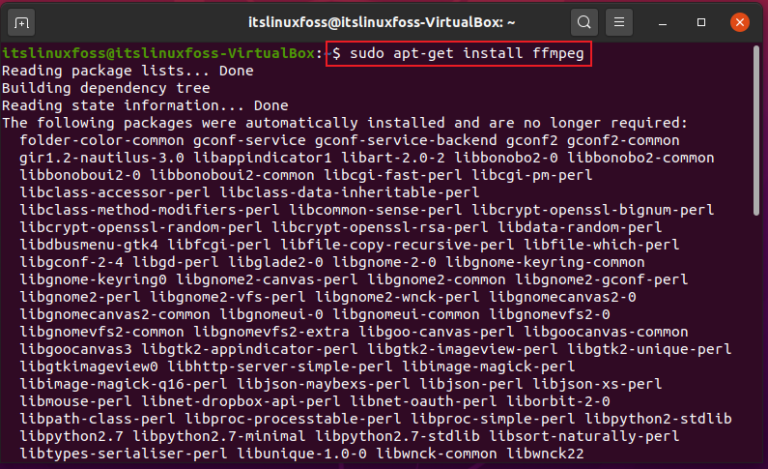

(The compilation from the source code is out of the scope of this tutorial.) The Terminal is usually found in the /Applications/Utilities folder. Then test that the software is properly installed.

INSTALL FFMPEG TERMINAL INSTALL
If may just be removing a folder, or it may be hunting around in /usr/local/ and /usr/bin folders for installed binaries.Įasy removal and upgrading is a strong argument for using a package manager for command line tools. First install the FFmpeg package using either Homebrew or a binary build. The output will include a line containing the binarys location on your Mac: ffmpeg. The output showed that FFmpeg is removed successfully from Ubuntu 22.04.

To remove the FFmpeg from Ubuntu 22.04, run the following command in the terminal: sudo apt remove ffmpeg.
INSTALL FFMPEG TERMINAL UPDATE
The FFmpeg 5 requires packages from the existing 4 FFmpeg PPA, import this first. To install the FFmpeg through the official apt repository, follow the step-by-step process given as below: Step 1: Update and upgrade system’s packages. If you are not sure how you installed ffmpeg, try running the command alone. The best method for installing FFmpeg is to install the FFmpeg 5 PPA by Rob Savoury, whose PPA repositories are well known for supporting multiple software spread across various versions of Ubuntu.
INSTALL FFMPEG TERMINAL HOW TO
It is critical to know how you installed ffmpeg in order to know how to remove it. If you installed with HomeBrew, the following Terminal.app command will perform the uninstall: brew uninstall ffmpeg. If you do not see this output or it does not mention Cellar, please expand your question with the output you do see. The key information in this extract is /usr/local/Cellar/ffmpeg/ this provides the location and that ffmpeg was installed as a HomeBrew Cellar. Replace the word video with the name of your video.If you wish to increase quality replace 192 with 320 or your wish. ffmpeg -i video.flv -vn -ar 44100 -ac 2 -ab 192 -f mp3 audio.mp3. Remember to open a terminal in the folder where you have stored the file to be converted. Look for output similar to: ffmpeg version 1.2.4 Copyright (c) 2000-2013 the FFmpeg developersīuilt on 11:36:01 with Apple LLVM version 5.0 (clang-500.2.79) (based on LLVM 3.3svn)Ĭonfiguration: -prefix=/usr/local/Cellar/ffmpeg/1.2.4 … Use the below commands to convert video files into simple mp3 files. The output will include a line containing the binary's location on your Mac: ffmpeg If you are not sure how you installed ffmpeg, try running the command alone. So open a terminal and update the whole system. Is there a way run ffmpeg from Terminal in unRAID so I can do it from my NAS instead of eating up CPU on my desktop I would like to run it via command line so I can tailor the scripts to exactly what I need. Unlike CentOS 9 Stream, FFmpeg is present in the Fedora 36 RPM fusion repositories. If you installed with HomeBrew, the following Terminal.app command will perform the uninstall: brew uninstall ffmpeg I currently use ffmpeg to trim, scale, and re-encode videos from Terminal on my Mac.


 0 kommentar(er)
0 kommentar(er)
